From Followers to Owners: The New Era of Social Media
Centralized social media has characterized the past two decades by describing the interaction of human beings, communication, and the consumption of information. Facebook, X, Instagram, and TikTok have become digital superpowers that control the conversation worldwide, commercializing attention and creating economies. However, the price of this convenience was as follows: privacy was ruined, non-transparent algorithms […]

Centralized social media has characterized the past two decades by describing the interaction of human beings, communication, and the consumption of information. Facebook, X, Instagram, and TikTok have become digital superpowers that control the conversation worldwide, commercializing attention and creating economies. However, the price of this convenience was as follows: privacy was ruined, non-transparent algorithms misled the users, and the balance of power between users and corporations was broken.
We can see the world turning into a more just digital ecosystem, one that is founded not on control, but on collaboration. This paradigm shift is in the form of decentralized social networks (DeSoc). They are not just new platforms; they represent a reinvention of digital community functionality, driven by blockchain technology, smart contracts, and decentralized governance.
This blog discusses why decentralized social networks represent the natural next step for Web2 platforms, the mechanisms involved, and the role we can play in creating this user-centric future.
The Web2 Paradigm
Web2 social networks achieved global dominance through convenience and design. They made it effortless to sign up, connect, and share, but their business model was built on one fundamental trade: you are not the customer, you are the product.
In this ecosystem, information is money. Any likes, shares, or scrolls are mined, processed, and sold to advertisers. The more users there are, the higher the value of the platform. Centralized architecture also provides platforms with total moderation of content, visibility, and even identity, meaning your reach, voice, and presence can be changed or destroyed at any time.
We call this the illusion of ownership. While users create the content, businesses personalize the value it generates. The Web2 model concentrates wealth and management, leaving creators and communities on the margins.
The Promise of Web3
Web3 is a paradigm shift that removes the middleman through the use of protocols. The identity systems ensure that users, rather than corporations, own and control their digital assets by using blockchains. All transactions, including posting and payment, are verifiable, portable, and transparent.
Social networks following this model are decentralized. They are modifiable, allowing developers and users to customize their use by adding functionality and features to existing frameworks, thereby fully controlling their online presence.
Our approach to Web3 development focuses on three core principles:
- Transparency through blockchain technology opens verifiable interactions.
- Autonomy through smart contracts, automated and trustless governance.
- Ownership through decentralized identity users as custodians of their data.
Defining Decentralized Social Networks (DeSoc)
Decentralized social networks (DeSoc) are blockchain-based and peer-to-peer social networks. They redistribute power among users and nodes, not central powers. Communities are governed by consensus and by code instead of by rules or monetization dictated by a single corporation.
Open social graphs allow users to store their information and relationships and interact with several platforms. The profile of a creator, their fans, and recognition are not limited to a single app; they can move across the entire landscape of the decentralized ecosystem.
An example is the type of project, such as Lens Protocol or Farcaster, which makes the social graph itself a public utility for any developer. This model allows innovation while retaining ownership by the users.
Why Centralization Fails?
Before we can envision the decentralized future, we must first confront the broken foundations of today’s centralized social media systems.
Data Exploitation and Privacy Erosion
The classic channels scale on surveillance capitalism, which earns money by selling targeted advertisements. Users give away their privacy in exchange for free access, which is not always evident. Our blockchain infrastructure solutions enable encrypted, verifiable data ownership, ensuring users decide how and where their data is used.
Algorithmic Control and Echo Chambers
Web2 algorithms are optimized for engagement, not truth. They amplify polarization and manipulate attention. By opposition, DeSoc might encourage transparency and variety, and communities would make their very own rules on moderation by way of decentralized governance.
Vendor Lock-in and Lack of Portability
Switching platforms in a Web2 manner, starting over; your buddies, posts, and affect remain locked in company databases. Decentralized identity frameworks and interoperable ecosystems, like those developed by us, eliminate this problem by letting users carry their social footprint across apps.
Skewed Value Distribution
In centralized systems, authors receive a portion of the earnings generated by their content. Web3 replaces this exploitative model with direct monetization mechanisms like NFTs, token-based rewards, and decentralized marketplaces.
The Web3 Solution
Among the vices of centralization is the shift towards a new paradigm of redistributing power, ownership, and trust, facilitated by decentralization.
Blockchain Technology and Distributed Ledgers
Social interactions are stored in blockchains in an unchangeable way, guaranteeing data authenticity. They will provide social programs based on their multi-chain and Layer 2 answers, that are scalable, steady, and price-stable.
Decentralized Identity (DIDs) and Self-Sovereignty
DID enables users to control digital identities without corporate control. This provides users with true self-sovereignty, enabling easy authentication across Web3.
Open Social Graphs and Interoperable Ecosystems
DeSoc thrives on openness. Open social graphs allow apps to share data securely, promoting collaboration over competition. We support developers building on open protocols, supporting them in setting up modular and composable DeSoc architectures.
Smart Contracts and Programmatic Governance
Smart contracts eliminate the role of centralized moderators and directors and, instead, establish a transparent governance structure. Groups can make guidelines, allocate rewards, or jointly vote on changes through those self-executing codes.
Cryptographic Protocols and Wallet Integration
In decentralized social ecosystems, cryptographic wallets replace conventional logins. They keep identity, credentials, and virtual assets, making wallets the brand new passports of the virtual international. Our secure wallet integration enables smooth onboarding and compliance.
Key Innovations Driving DeSoc Forward
As decentralized social networks evolve, a wave of groundbreaking improvements is reshaping how customers create, join, and seize prices online.
User-Owned Content and True Monetization for Creators
With blockchain-based ownership, creators can tokenize their work as NFTs, proving authenticity and controlling resale royalties. Platforms can build creator economies without intermediaries, something they specialize in through NFT integration and tokenization models.
Social Tokens and the Evolution of the Creator Economy
Social tokens permit groups to co-personalize an author’s brand, granting access to or voting rights. They rework passive audiences into lively individuals. We help projects design sustainable tokenomics fashions that align incentives and prevent speculative abuse.
Decentralized Autonomous Organizations (DAOs) and Community Governance
DAOs allow customers to co-govern systems through on-chain proposals and vote casting. We build DAO frameworks that empower communities to govern content material moderation, funding, and development priorities transparently.
Token Economy and DeFi Integration
When paired with DeFi, DeSoc platforms create new financial layers, staking for engagement, liquidity pools for creator tokens, and reward mechanisms for participation. This fusion of finance and social interaction fuels a new digital economy.
Leading the Charge
Several pioneering platforms are already proving that decentralized social networking isn’t just a theory, it’s a fast-emerging reality.
Lens Protocol
Lens enables full composability, letting users own profiles, followers, and content as NFTs. Developers can build apps that share the same social graph, fostering an interoperable ecosystem, a vision we strongly support.
Farcaster
Farcaster emphasizes user control and developer flexibility. Its decentralized protocol ensures that users retain full account ownership, even if they switch clients or apps.
Meanwhile, projects like Minds, Nostr, and Bluesky test with decentralized concepts, providing various approaches to censorship resistance and price distribution.
Bridging the Gap
The biggest challenge for Web3 isn’t ideology, it’s usability. Wallets, gas fees, and jargon alienate everyday users. Our design philosophy focuses on user experience first:
- Simplifying onboarding with social logins and gasless transactions.
- Building cross-chain wallets that abstract complexity.
- Offering educational interfaces that guide non-crypto users intuitively.
We believe decentralization shouldn’t feel technical. It should feel natural.
Navigating the Future
As the decentralized social panorama matures, new challenges and opportunities will define how far and how quickly the shift from Web2 is going.
Content Moderation vs. Freedom of Expression
The query introduced through decentralization is: Who moderates? The strategy for this is community-based moderation frameworks and AI-based filtering, which serve as an alternative to self-censorship.
Regulatory Landscape and Legal Uncertainty
DeSoc operates across borders, often outside traditional regulations. We ensure regulatory compliance, partnering with audit corporations like CertiK to supply secure, compliant smart contract solutions.
Security and Privacy in a Decentralized World
The threats of security breaches and identity theft are still significant. By establishing zero-knowledge proofs and multi-signature wallets, we can develop privacy-first architectures for safer social ecosystems.
The “Killer App” Question
For mass migration from Web2, DeSoc needs its “killer app”, a platform that makes decentralization irresistible. It can be a social-trade hybrid, a writer-first DAO, or an on-chain community hub. Our R&D team is actively exploring such models.
AI and DeSoc Integration
The use of Artificial Intelligence will soon enable the creation of personalized feeds, moderation, and discovery without affecting privacy. An AI-based on-chain data will bring an even more innovative, user-controllable social internet.
Final Thoughts
It is not the corporations that own the future of social media, but the communities. Decentralized social networks are a resurrection of the internet’s spirit of openness, collaboration, and user empowerment.
This is the future that we are creating in the web3 ecosystem: roads, blockchains, tokenized economies, and Web3 marketing. The idea is not only to decentralize technology, but to democratize opportunity.
Decentralized social networks will transform in the future, as more users seek transparency, fairness, and ownership in mainstream digital networks. The world will shift into people owning platforms rather than platforms owning people.
The subsequent stage of social connectivity is not merely decentralized but even human-centred.
Date
15 days agoShare on
Related Blogs

How Businesses Can Build Scalable DApps and Smart Contracts
9 days ago

AI And Blockchain Synergy: Building Smarter & Transparent Systems
10 days ago

The Quantum Leap: How Blockchain Must Evolve to Stay Secure
13 days ago

From Followers to Owners: The New Era of Social Media
15 days ago








